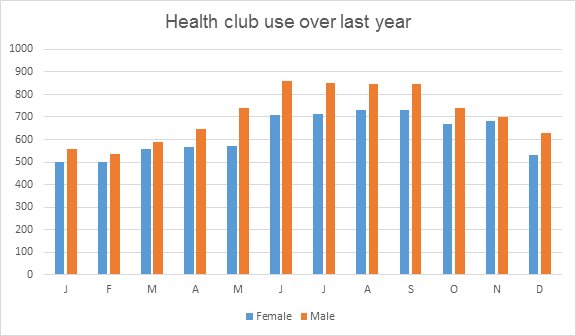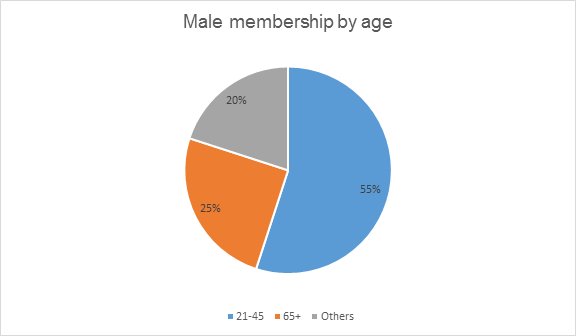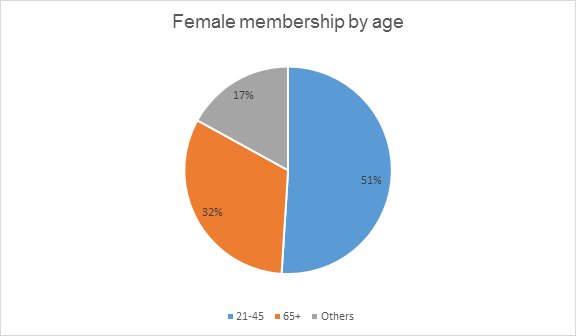
Hãy nhập câu hỏi của bạn vào đây, nếu là tài khoản VIP, bạn sẽ được ưu tiên trả lời.


Ta có tích:
2 x 3 x 5 x 7 x 11 x 13 x 17 x 19 x 23 x 29 x 31 x 37
Số đầu tiên của tích là số 2 là số chẵn nên kết quả của phép tính cũng sẽ là một số chẵn Mà: 3999 là số lẻ
Vậy bạn đó tính sai

\(n_{co_2}=\dfrac{0,896}{22,4}=0,02\left(mol\right)\)
\(n_{BaCl_2}=\dfrac{100.20,8\%}{208}=0,1\left(mol\right)\)
PTHH :
\(BaCl_2+Na_2CO_3\rightarrow BaCO_3+2NaCl\) (1)
Như vậy : dung dịch X gồm \(BaCO_3;NaCl;\) có thể có \(BaCl_2\) dư hoặc \(Na_2CO_3\) dư
PTHH :
\(BaCO_3+H_2SO_4\rightarrow BaSO_4+CO_2+H_2O\) (2)
ctc : \(Na_2CO_3+H_2SO_4\rightarrow Na_2SO_4+CO_2+H_2O\) (3)
+) TH1 : Nếu \(BaCl_2\) dư ( không có phản ứng (3) )
Theo phương trình (2) \(\Rightarrow n_{BaCO_3}=n_{CO_2}=0,04\left(mol\right)\)
Theo phương trình (1) \(\Rightarrow n_{Na_2CO_3}=n_{BaCO_3}=0,04\left(mol\right)\)
\(\Rightarrow m_{Na_2CO_3}=0,04.106=4,24\left(g\right)\)
\(\Rightarrow C_{\%ddNa_2CO_3}=\dfrac{4,24.100\%}{100}=4,24\%\)
BTKL \(\Rightarrow m_{ddBaCl_2}+m_{ddNa_2CO_3}+m_{ddH_2SO_4}=m_{ddspứ}+m_{CO_2}\)
\(\Rightarrow m_{ddBaCl_2}+m_{ddNa_2CO_3}+m_{ddH_2SO_4}-m_{CO_2}=m_{ddspứ}\)
\(\Rightarrow m_{ddspứ}=100+100+100-0,04.44=298,14\left(g\right)\)
+) TH2 : Nếu \(Na_2CO_3\) dư ( xảy ra phản ứng (3) )
Theo phương trình (1) \(\Rightarrow n_{BaCO_3}=n_{BaCl_2}=0,1\left(mol\right)\)
Theo phương trình (2) \(\Rightarrow n_{CO_2\left(2\right)}=n_{BaCO_3\left(1\right)}=0,1\left(mol\right)>0,04\left(mol\right)\) ( vô lí )
\(\Rightarrow\) TH2 loại

Em tham khảo nha:
The illustrations give the number of full-time male and female health-centre members in Miami and Florida throughout the year 2013 and outline the ratio of these members based on their gender and age. Overall, more male were active health centre members than that of females and just over half of them were between 21 to 45 years old.
As the bar chart implies, 500 females were active members of different fitness clubs in Florida and Miami in January 2012 while their male counterparts were slightly higher in number. The membership count to these gyms and health centres remained almost the same till April but afterwards increased rapidly between June and September. During this period, fitness centres in these two areas had more than 800 active male participants and slightly over 700 female members. The number of male health club members had always been higher than that of females. From October until the end of the year, these clubs retained a fewer number of members and this number varied from 500 to 700.
According to the pie charts, more than half of the male members of these fitness clubs were between 21 to 45 years old while this was exactly 50% for women. Over 65 years old men accounted for one-quarter participants while it was 6% higher in the case of females. Remaining one-fifth fitness club members were from different other age groups.

1. What are you fond ..of.
2.The schoolboys and schoolgirls gathered .in.. small groups and talked .to.. one another
3. It is difficcult to get acquainted ..with. newcomers
4. My from teacher is rather strict ..with. us
5. They look at their new school .with.. curious eyes
6. The pupils were busy ..with. their work

\(\dfrac{2x-34}{2}=14\Rightarrow2x-34=28\Leftrightarrow2x=62\Leftrightarrow x=31\)

\(\dfrac{x-4}{2020}+\dfrac{x-3}{2021}+\dfrac{x-2}{2022}+\dfrac{x-1}{2023}+\dfrac{x-2024}{5}=4\) (sửa đề)
\(\Rightarrow\left(\dfrac{x-4}{2020}-1\right)+\left(\dfrac{x-3}{2021}-1\right)+\left(\dfrac{x-2}{2022}-1\right)+\left(\dfrac{x-1}{2023}-1\right)+\dfrac{x-2024}{5}=0\)
\(\Rightarrow\dfrac{x-2024}{2020}+\dfrac{x-2024}{2021}+\dfrac{x-2024}{2022}+\dfrac{x-2024}{2023}+\dfrac{x-2024}{5}=0\)
\(\Rightarrow\left(x-2024\right)\left(\dfrac{1}{2020}+\dfrac{1}{2021}+\dfrac{1}{2022}+\dfrac{1}{2023}+\dfrac{1}{5}\right)=0\)
\(\Rightarrow x-2024=0\) (vì \(\dfrac{1}{2020}+\dfrac{1}{2021}+\dfrac{1}{2022}+\dfrac{1}{2023}+\dfrac{1}{5}\ne0\))
\(\Rightarrow x=2024\)
\(\dfrac{x-4}{2020}-1+\dfrac{x-3}{2021}-1+\dfrac{x-2}{2022}-1+\dfrac{x-1}{2023}-1+\dfrac{x-2024}{5}+2=0\)
\(\Leftrightarrow\dfrac{x-2024}{2020}+\dfrac{x-2024}{2021}+\dfrac{x-2024}{2022}+\dfrac{x-2024}{2023}+\dfrac{x-2024}{5}+2=0\)
\(\Leftrightarrow\left(x-2024\right)\left(\dfrac{1}{2020}+\dfrac{1}{2021}+\dfrac{1}{2022}+\dfrac{1}{2023}+\dfrac{1}{5}\right)+2=0\)
\(\Leftrightarrow x=-\dfrac{2}{\dfrac{1}{2020}+\dfrac{1}{2021}+\dfrac{1}{2022}+\dfrac{1}{2023}+\dfrac{1}{5}}+2024\)

SỬA ĐỀ: b) Chứng tỏ S>n-2... & Điều kiện: \(n\inℕ^∗\) và \(n>2\) (theo quy luật)
a) \(S=\dfrac{3}{4}+\dfrac{8}{9}+\dfrac{15}{16}+...+\dfrac{n^2-1}{n^2}\)
\(S=\left(1-\dfrac{1}{4}\right)+\left(1-\dfrac{1}{9}\right)+\left(1-\dfrac{1}{16}\right)+...+\left(1-\dfrac{1}{n^2}\right)\)
\(S=1-\dfrac{1}{2^2}+1-\dfrac{1}{3^2}+1-\dfrac{1}{4^2}+...+1-\dfrac{1}{n^2}\)
\(S=n-1-\left(\dfrac{1}{2^2}+\dfrac{1}{3^2}+\dfrac{1}{3^2}+...+\dfrac{1}{n^2}\right)\)
Nhận xét:
\(n-1-\left(\dfrac{1}{2^2}+\dfrac{1}{3^2}+\dfrac{1}{3^2}+...+\dfrac{1}{n^2}\right)< n-1\)
\(\Rightarrow S< n-1\) (*)
b) Nhận xét:
\(\left\{{}\begin{matrix}\dfrac{1}{2^2}< \dfrac{1}{1\cdot2}\\\dfrac{1}{3^2}< \dfrac{1}{2\cdot3}\\...\\\dfrac{1}{n^2}< \dfrac{1}{\left(n-1\right)\cdot n}\end{matrix}\right.\)
\(\Rightarrow\dfrac{1}{2^2}+\dfrac{1}{3^2}+...+\dfrac{1}{n^2}< \dfrac{1}{1\cdot2}+\dfrac{1}{2\cdot3}+...+\dfrac{1}{\left(n-1\right)\cdot n}=1-\dfrac{1}{n}< 1\)
\(\Rightarrow-\left(\dfrac{1}{2^2}+\dfrac{1}{3^2}+\dfrac{1}{3^2}+...+\dfrac{1}{n^2}\right)>1\)
\(\Rightarrow n-1-\left(\dfrac{1}{2^2}+\dfrac{1}{3^2}+\dfrac{1}{3^2}+...+\dfrac{1}{n^2}\right)>n-1-1=n-2\)
\(\Rightarrow S>n-2\) (**)
Từ (*) và (**) suy ra:
\(n-2< S< n-1\)
Mà \(n-1\) và \(n-2\) là 2 số tự nhiên liên tiếp nên:
S không thể là một số tự nhiên
Vậy S không thể là một số tự nhiên

Gọi số tự nhiên cần tìm là \(\overline{5abc}\)
Theo đề bài ta có:
\(\overline{abc}=\dfrac{1}{41}\times\overline{5abc}\)
\(\overline{abc}=\dfrac{1}{41}\times\left(5000+\overline{abc}\right)\)
\(\overline{abc}=\dfrac{5000}{41}+\dfrac{1}{41}\times\overline{abc}\)
\(\overline{abc}-\dfrac{1}{41}\times\overline{abc}=\dfrac{5000}{41}\)
\(\dfrac{40}{41}\times\overline{abc}=\dfrac{5000}{41}\)
\(\overline{abc}=\dfrac{5000}{41}:\dfrac{40}{41}\)
\(\overline{abc}=125\) hay số cần tìm là \(\overline{5abc}=5125\)
Vậy số cần tìm là 5125




Ta có: \(\overline{abc0}=\overline{abc}\times10\) chia hết cho 5; d không chia hết cho 5
Suy ra: \(\overline{abcd}=\overline{abc0}+d\) chia 5 dư d
hay số \(\overline{abcd}\) chia cho 5 có số dư bằng số dư của phép chia d cho 5
Ta có:
\(\overline{abcd}=\overline{abc0}+d=\overline{abc}\times10+d\)
\(\overline{abc}\times10=5\times\overline{abc}\times2\) nên chia hết cho 5
Mà: \(\overline{abcd}\) không chia hết cho 5
\(\Rightarrow d\) không chia hết cho 5
⇒ Số dư khi chia \(\overline{abcd}\) cho 5 chính là số dư khi chia d cho 5